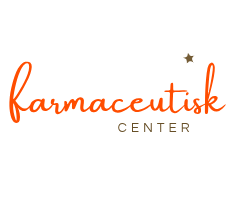Ob/gyn group advises against cannabis use during pregnancy 2025. The American College of Obstetricians and Gynecologists (ACOG) has issued significantly updated clinical guidance urging people to avoid cannabis when planning pregnancy, while pregnant, breastfeeding or postpartum — and for clinicians to screen everyone for cannabis use during the prepregnancy, pregnancy and postpartum periods. The move reflects growing concern about accumulating evidence that prenatal cannabis exposure is linked to harms such as low birth weight, preterm birth and other neonatal complications. ACOG+1
ACOG’s announcement frames the guidance as an attempt to bring clinical practice in line with emerging evidence and rising use. The college emphasized that, although cannabis is perceived by some as “natural” or harmless, there is no established safe level of exposure during pregnancy and breastfeeding — and that clinicians should treat cannabis use the same way they screen for and discuss tobacco, alcohol and other substances. ACOG+1
What the guidance says
The updated ACOG guidance recommends universal screening for cannabis use among people who are planning pregnancy, currently pregnant, postpartum, or breastfeeding, using validated screening tools and nonjudgmental counseling. Clinicians are urged to discuss potential risks, document conversations, offer support and referrals for substance-use treatment when needed, and frame counseling around shared decision-making rather than punitive approaches. The guidance also reaffirms a broad clinical recommendation: avoid cannabis use in pregnancy and while lactating. ACOG+1
Evidence behind the change
ACOG pointed to a growing body of peer-reviewed research and systematic reviews showing associations between prenatal cannabis exposure and adverse outcomes. Recent evidence syntheses have found higher odds of preterm birth, low birth weight and small-for-gestational-age infants among people who used cannabis in pregnancy; some analyses also report links to increased neonatal intensive-care admissions and, with lower certainty, possible longer-term neurodevelopmental effects. Researchers and health systems have described the evidence as mounting enough to warrant reinforced clinical guidance. PubMed+1
Public-health agencies have long cautioned that THC — the psychoactive compound in cannabis — crosses the placenta and can reach the fetus, and that a fetus has cannabinoid receptors that are active during key stages of brain development. Those biological mechanisms, paired with observational epidemiology, underpin ACOG’s precautionary stance. The CDC similarly warns that using cannabis while pregnant may affect fetal development and increase the risk of pregnancy complications. CDC+1
Why universal screening?
ACOG says universal screening reduces bias and avoids singling out specific groups, creating opportunities for clinicians to identify use early and offer counseling or support. The guidance recommends using validated screening questionnaires or structured self-report tools, and pairing screening with a nonpunitive pathway for follow-up care, including behavioral interventions or referrals to substance-use treatment when appropriate. The college stressed that screening should aim to improve maternal and infant health rather than to punish or stigmatize patients. ACOG+1
Responses and context
Clinicians, addiction specialists and some public-health leaders welcomed the clearer, stronger ACOG stance, saying it gives practitioners firmer footing to open conversations with patients at a time when cannabis use during pregnancy appears to be increasing in some populations. Others cautioned that screening programs must be implemented carefully to avoid deterring pregnant people from seeking care or driving use underground — especially in states where legal consequences for substance use during pregnancy can affect access to services. The Times of India+1
Alongside the ACOG guidance, recent institutional reviews and meta-analyses — including work highlighted by academic centers and specialty news outlets — have added to the urgency of clinical messaging by synthesizing the evidence for clinicians and policymakers. Those reviews informed ACOG’s decision to move from reaffirmation to a more proactive recommendation for universal screening. The ObG Project+1
What clinicians should do now
ACOG recommends clinicians:
• Ask all patients planning pregnancy, currently pregnant, postpartum, or breastfeeding about cannabis use using validated screening methods. ACOG
• Counsel patients that no safe level of cannabis use in pregnancy is known and discuss potential risks to fetal growth and neonatal outcomes. CDC+1
• Offer supportive, nonpunitive resources — brief behavioral interventions, counseling, and referrals for substance-use treatment when indicated. ACOG
• Document counseling and follow up; avoid punitive reporting that may deter care-seeking. Межа. Новини України.
What patients should know
Experts quoted in accompanying coverage urged patients who are pregnant or trying to conceive to avoid cannabis and to speak candidly with their clinicians about any use. For those using cannabis for symptoms such as nausea, anxiety or pain, clinicians are encouraged to discuss safer, evidence-based alternatives rather than leave patients to self-medicate. ACOG+1
Limits and continuing research
ACOG and others note that much of the evidence remains observational and that confounding and changes in THC potency over time complicate causal inference. Researchers continue to call for higher-quality studies that can more clearly separate the effects of cannabis from other risk factors and to examine longer-term developmental outcomes. But in the interim, ACOG argues that the balance of evidence and biological plausibility support a precautionary clinical approach. PubMed+1
Sources consulted (representative)
American College of Obstetricians and Gynecologists — news release and updated clinical guidance. ACOG+1
Centers for Disease Control and Prevention — page on cannabis and pregnancy. CDC
Recent evidence reviews and meta-analyses (JAMA Pediatrics / PubMed, OHSU review). PubMed+1
Coverage and analysis in mainstream outlets summarizing the guidance. The Times of India+1


